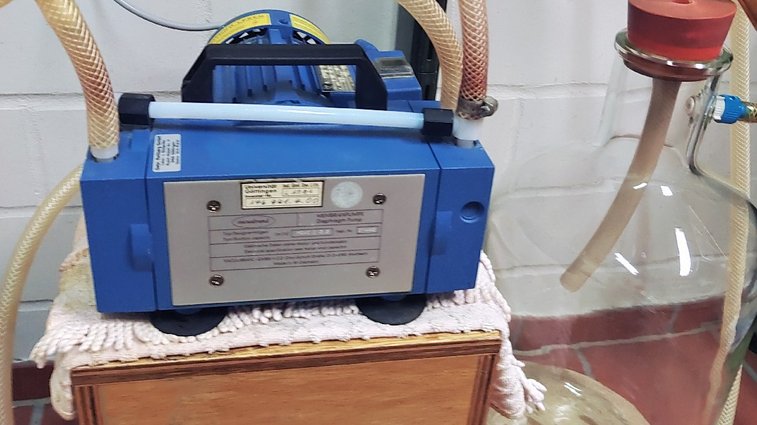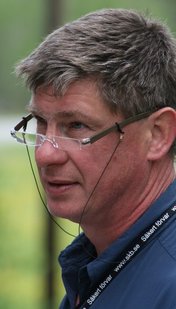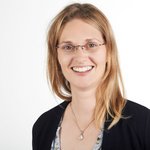
Diaphragm pump from VACUUBRAND for the filtration of clay minerals
© Georg-August-Universität Göttingen
Determining the age of rocks and minerals: For decades, a diaphragm pump from VACUUBRAND has been reliably performing its service in the Department of Isotope Geology at the Georg August University in Göttingen. There, it supports the radiometric K-Ar method for dating geological processes. In this interview, we talk to Dr. Klaus Wemmer, head of noble gas mass spectrometry.

Dr. Klaus Wemmer
© Georg-August-Universität Göttingen
What kind of research do you do?
Dr. Klaus Wemmer: I am a graduate geologist and have been leading the noble gas mass spectrometry at the Georg August University in Göttingen for 22 years. Our department of Isotope Geology is part of the Geoscience Center Göttingen (GZG). This cooperates with many national and international researchers on a variety of topics.
In my laboratory, age determinations are performed on rock and mineral samples using the radiometric K-Ar method (potassium-argon dating). The isotope potassium-40 (40K) occurs frequently in terrestrial, but also in extraterrestrial samples. Its radioactive half-life is known: Within 1.25 billion years, half decays to calcium and argon. So we first measure the amount of potassium contained in a sample by flame photometry. Then, using a noble gas mass spectrometer, we determine the number of argon-40 isotopes. By looking at the ratio of the two isotopes to each other, we can determine the length of time since the mineral was formed. My laboratory specializes in the dating of clay minerals.
What do you use vacuum pumps for?
Dr. Klaus Wemmer: For filtration of the samples consisting of a clay-mineral-water mixture, we need a vacuum. For this we use a diaphragm pump from VACUUBRAND. It generates negative pressure in a 25-liter suction bottle, which creates a vacuum on three sieve plates. The water is sucked through filters of pore size 0.1 µm to concentrate the clay minerals on it. We have been using the ME 4C 3.6 m3/h diaphragm pump since the ‘80s. This device is very easy to operate, simple to maintain and, above all, reliable.
How satisfied are you with VACUUBRAND products and service?
Dr. Klaus Wemmer: I am more than satisfied! I am thrilled with the longevity of the diaphragm pump. It has been working in my laboratory for well over 30 years without any problems. For me, this is a real quality product. The service is always competent and fast. I have only had to have the seals replaced once so far, about 10 years ago. I cannot judge repair services, as none have been necessary so far. However, I would choose VACUUBRAND again at any time.
We thank Dr. Klaus Wemmer and the Georg August University in Göttingen for the interview.
There are now successor products to the ME 4C. Would you like to learn more about our durable diaphragm pumps? Here you will find information about our extensive vacuum equipment range:
